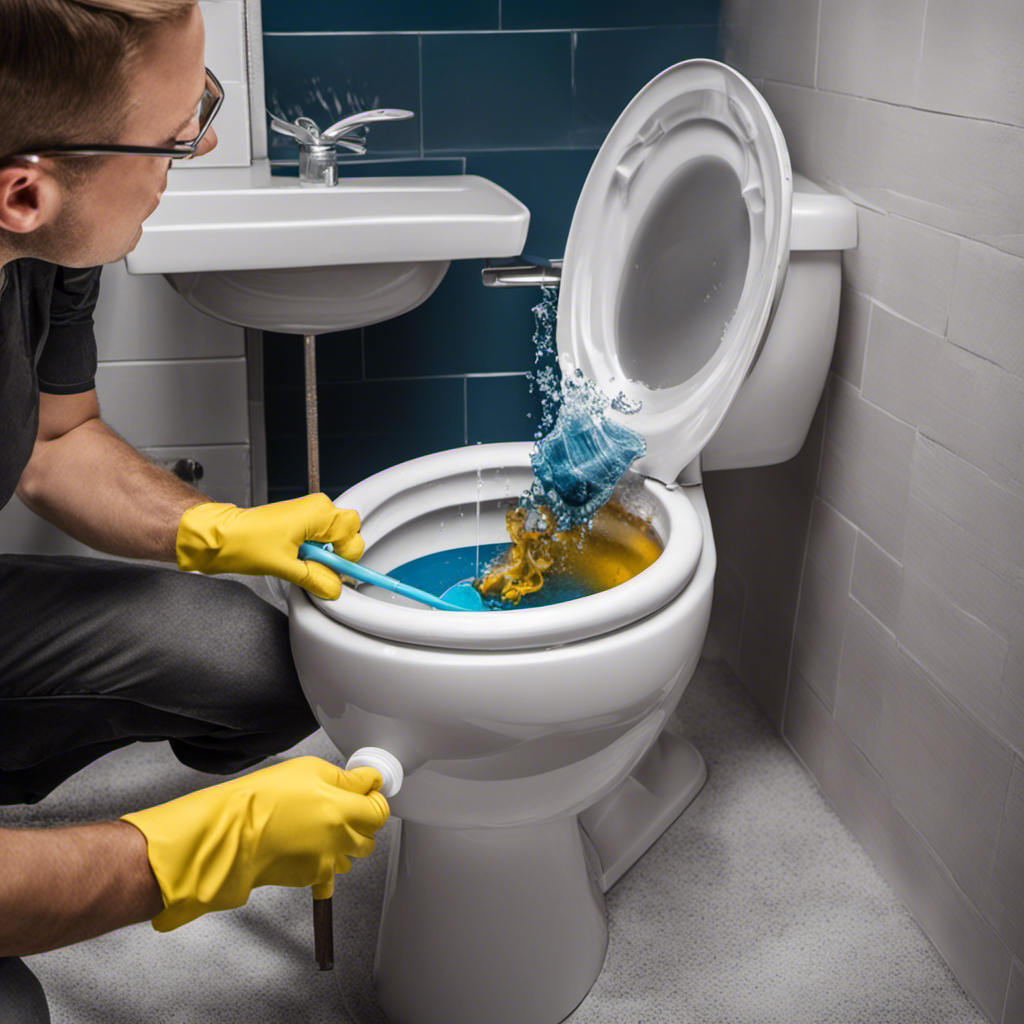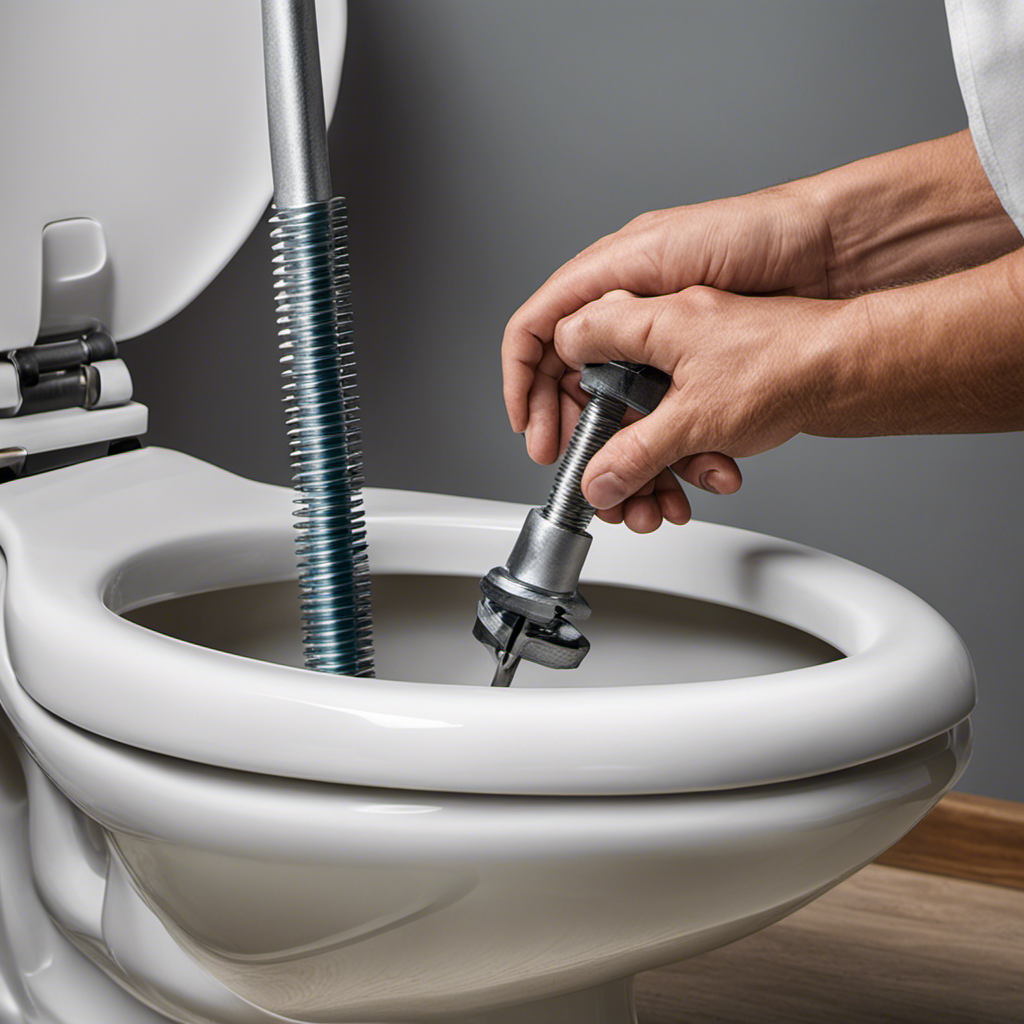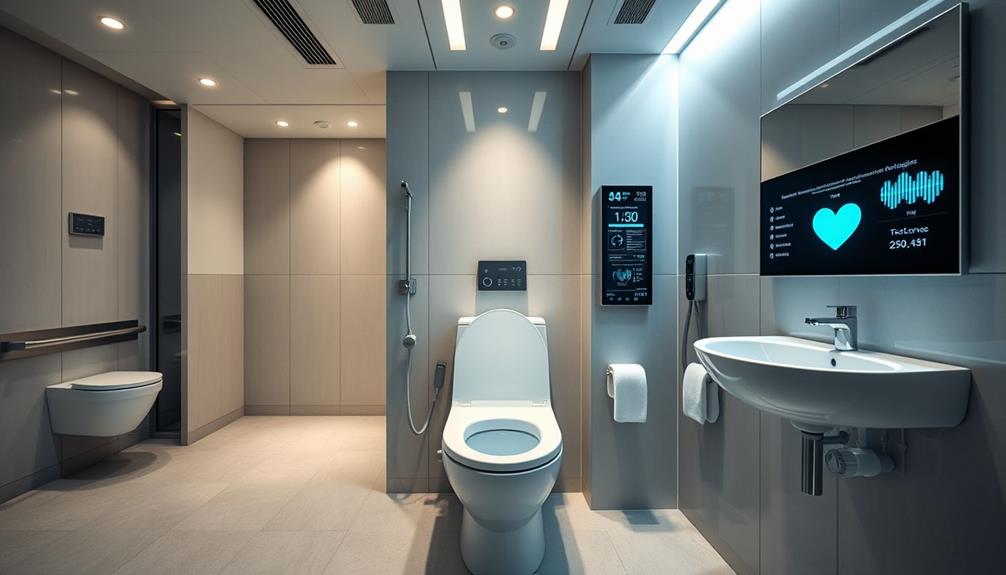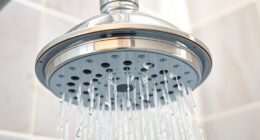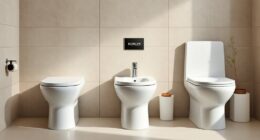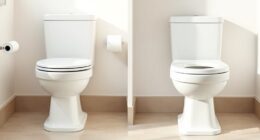As I walk into the bathroom, a sinking feeling washes over me: the toilet is clogged.
But fear not, fellow DIY enthusiasts! In this guide, I’ll share with you the ultimate solution to your clogged toilet woes.
With a few essential tools and a little know-how, you’ll be able to tackle this plumbing predicament head-on.
So, let’s roll up our sleeves and get ready to unclog that toilet like a pro!
Key Takeaways
- Flushing items not meant to be disposed of in the toilet can cause clogs.
- Excessive toilet paper usage can lead to toilet clogs.
- Signs of a clogged toilet include slow draining, water rising to the rim, and gurgling sounds.
- It is important to prevent toilet clogs to avoid inconvenience and expense.
Understanding the Common Causes of Toilet Clogs
To understand the common causes of toilet clogs, you’ll need to know what not to flush down the toilet. Toilet clog prevention is essential in maintaining a properly functioning bathroom.
One of the main culprits of clogged toilets is flushing items that are not meant to be disposed of in this manner. Items such as baby wipes, feminine hygiene products, cotton balls, and paper towels can quickly lead to a blockage in the pipes. Additionally, excessive toilet paper usage can also contribute to clogs.
It’s important to be mindful of what you flush, as signs of a clogged toilet include slow draining, water rising to the rim, or gurgling sounds. By being aware of these common causes and practicing proper toilet clog prevention, you can avoid the inconvenience and expense of a clogged toilet.
Essential Tools and Supplies for Draining a Clogged Toilet
One essential tool for fixing a backed-up toilet is a plunger. It is important to have a plunger with a flange, as this will create a better seal and increase the effectiveness of the plunging action.
In addition to a plunger, there are other tools and supplies that can be useful for toilet drain cleaning and DIY toilet repairs. Here are two sub-lists to provide a deeper understanding of these essential items:
-
Tools:
-
Toilet auger: This tool is designed specifically for clearing stubborn clogs from the toilet drain. It has a flexible cable that can reach deep into the drain and break up the blockage.
-
Pipe wrench: This tool is useful for removing and replacing the toilet’s trap, which is often the source of clogs. It provides a strong grip and allows for easy tightening or loosening of pipes.
-
Supplies:
-
Rubber gloves: It is important to protect your hands while working on a clogged toilet. Rubber gloves provide a barrier against bacteria and other contaminants.
-
Bucket: Having a bucket nearby is helpful for catching any water or debris that may come out during the unclogging process.
Step-by-Step Guide to Clearing a Toilet Blockage
Having a plunger with a flange is crucial for creating a better seal and increasing the effectiveness of clearing a backed-up toilet. The flange, which is a rubber extension on the bottom of the plunger, helps to create a tight seal over the drain opening, ensuring that the pressure generated by the plunging action is focused on the blockage.
This increased pressure can help to dislodge the clog and allow the water to flow freely again. However, if you find yourself without a plunger with a flange, there are still effective techniques for unclogging a toilet. These techniques include using hot water and dish soap, a wire hanger, or a homemade drain snake.
Effective Techniques for Unclogging a Toilet Without a Plunger
If you don’t have a plunger with a flange, there are still effective techniques for unclogging a toilet. Here are some alternative methods and natural remedies you can try:
-
Hot Water Method:
-
Boil a pot of water.
-
Carefully pour the hot water into the toilet bowl.
-
Let it sit for a few minutes.
-
Flush the toilet to see if the clog has cleared.
-
Baking Soda and Vinegar Method:
-
Pour half a cup of baking soda into the toilet bowl.
-
Follow it with one cup of vinegar.
-
Let the mixture fizz for a few minutes.
-
Flush the toilet and check if the clog is gone.
Preventive Measures to Avoid Future Toilet Clogs
To avoid future toilet clogs, it’s important to be mindful of what you flush down the drain. Many people overlook the importance of proper flushing and end up facing costly and inconvenient clogs. To ensure that your toilet functions smoothly, follow these simple guidelines for toilet maintenance.
One key aspect of proper flushing is to only flush toilet paper and human waste. Flushing anything else, such as feminine hygiene products, wipes, or paper towels, can lead to blockages in your plumbing system. Additionally, it is crucial to avoid pouring grease or oil down the drain as they can solidify and cause clogs.
Here is a table summarizing what can and cannot be flushed:
| Flushable | Non-flushable |
|---|---|
| Toilet paper | Feminine hygiene products |
| Human waste | Wipes |
| Paper towels |
Frequently Asked Questions
Can I Use a Wire Hanger to Unclog a Toilet?
I wouldn’t recommend using a wire hanger to unclog a toilet. There are safer and more effective alternative methods available. Let me explain some common causes of toilet clogs and how to prevent them.
How Do I Know if the Toilet Clog Is Caused by a Foreign Object?
To diagnose a toilet clog, look for signs like water backing up or slow flushing. Common causes may include excess toilet paper or flushed foreign objects. It’s important to address the clog promptly to avoid further issues.
Is It Safe to Use Chemical Drain Cleaners to Unclog a Toilet?
Using chemical drain cleaners to unclog a toilet is not safe. Instead, use plungers as they are effective and pose no risk of damaging the toilet. Consider hiring a professional plumber for guaranteed results.
Can I Use a Wet/Dry Vacuum to Remove Water From a Clogged Toilet?
Yes, a wet/dry vacuum can be used to remove water from a clogged toilet. However, it is important to note that using a plunger or a plumbing snake is typically more effective for unclogging a toilet.
What Should I Do if the Toilet Clog Persists After Attempting to Unclog It?
If the toilet clog persists after attempting to unclog it, there are a few solutions you can try. You could use a plunger, a toilet auger, or a chemical drain cleaner. If none of these work, it’s time to seek professional plumbing help.
Conclusion
So there you have it, my dear readers. After delving into the depths of toilet clogs and mastering the art of unclogging, we can proudly declare ourselves as certified bathroom plumbers.
Armed with our knowledge of the common causes of toilet clogs and equipped with the essential tools, we can tackle any blockage that dares to challenge us.
And let’s not forget our effective techniques for unclogging without a plunger, a true mark of a seasoned pro.
So go forth, my fellow bathroom warriors, and may your toilets forever flow freely.
